Queer Archival Praxis Roundtable
With Guests David Silvernail, Janet Werther, Victoria Lafave, Jordan Ealey, and Kelli Crump
Nicolas Shannon Savard: Hello, and welcome to Gender Euphoria: The Podcast, a series produced for HowlRound Theatre Commons, a free and open platform for theatremakers worldwide. I’m your host, Nicolas Shannon Savard. My pronouns are they, them, and theirs.
Today’s discussion is one part of a very large roundtable of queer artists, historians, and educators originally featured as part of the 2023 Association for Theatre and Higher Education Conference. Because there were over three hours of conversation between one virtual and one in-person gathering, I’ve broken this up into a couple of episodes. More information on where to find the whole discussion later.
For now, here is part one of “Queer Archival Praxis: Histories and Methodologies.”
Rebecca Kling: Gender euphoria is—
Dillon Yruegas: Bliss. Yeah, bliss.
Siri Gurudev: Freedom to experience masculinity, femininity, and everything in between.
Azure D. Osborne-Lee: Getting to show up—
Siri: Without any other thought but my own pleasure.
Azure: As your full self.
Rebecca: Gender euphoria is opening the door to your body and being home.
Dillon: Unabashed bliss.
Joshua Bastian Cole: You can feel it. You can feel the relief—
Azure: Feel safe—
Joshua: And the sense of validation—
Azure: Celebrated—
Joshua: And actualization.
Azure: Or sometimes it means—
Rebecca: Being confident in who you are—
Azure: But also, to see yourself reflected back.
Rebecca: Or maybe not, but being excited to find out.
Nicolas: Hello, and welcome to the 2023 Association for Theatre and Higher Education Conference, recording from Meeting Room 310 at the JW Marriott in Austin, Texas. I’m your host, Nicolas Shannon Savard. My pronouns are they, them, and theirs. I’m here today with my fellow panelists (who I will have introduce themselves later on) for the “Queer Archival Praxis: Histories and Methodologies” Roundtable, hosted by the LGBTQ, American Theatre and Drama Society, and Theatre History Focus Groups.
To give you a quick recap, because this is the third part of a much larger discussion: last year, in discussions with queer theatre scholars at 2022’s conference, we hosted a roundtable called “Look Back in Glitter” reflecting on queer legacy. Who has shaped our artistry and scholarship? Who would we like to add to the canon of LGBTQ theatre history? And a rich critical discussion emerged from that. We were challenged to consider how interlocking systems of white supremacy and patriarchy influence whose work is preserved in the first place, whose artistry is deemed worthy of study, and whose is left uncredited, undocumented. And we felt that discussion needed to continue, so here we are!
This year, we’ve reconvened, joined by a few more artist-scholars to explore how we might work to queer the archive as well as our own work within it. To queer, here, is less an identity and more a verb meaning “to destabilize easy categorizations, to question taken-for-granted norms, to make hegemonic cultural assumptions visible.” We seek to reconceptualize the archive as something actively constructed in community and to explore archival practices with reparative motives.
Diverging from the traditional conference panel model of presenting findings after the research project has been completed, we aim to create a space for active dialogue, engaging with and sharing reflections on works currently in progress, challenges, and failures in the research process; creatively and queerly investigating histories of communities whose diversity, tensions, conflicts, and solidarities remain largely marginalized or entirely absent from institutional theatre archives.
Beyond the content of our discussion, I think that how and where and when we’re having it is equally important. How do we queer the archive or the conference, bend the format to fit people in the session rather than fitting ourselves into traditional formats and structures? One response to that was to turn our conference panel into a podcast. Three reasons why: one, it allows us to create an audio-based record, an archive in itself, of the ideas shared. It’s an archival praxis that privileges dialogue, relationality, and collaborative processing. Two, a podcast can make this conversation accessible to a broader audience so that it can more easily continue beyond this one conference room in this one location, in this one ninety-minute session. And three, the podcast format made it possible for the conversation to be accessible to all of the scholars who wanted to be a part of the session in the first place.
So, we proposed this roundtable with a roster of ten participants. There are four of us who were able to travel across the country to be here in person for the variety of reasons that conferences like this one tend to be inaccessible, particularly to contingent faculty members, graduate students, parents of small children, people with disabilities, all of those things. So, a couple of weeks ago, we recorded a virtual “part one” of this discussion. I want to have each of our roundtable participants introduce themselves.
So if you could tell us: Who are you? What brings you to this roundtable today? And what are you working on, working through, working against? In other words, tell us about a work in progress of yours.
David Silvernail: Sure. Hi, everyone. I’m David Silvernail. I’m a senior educator at New-York Historical Society and I’m currently working through ideas of queer space, particularly historic homes and issues around queerness within them. That’s what I’m thinking about.
Janet Werther: I’m Janet Werther. I use they/them pronouns. I am trying to finish a PhD dissertation at the CUNY Grad Center, I am parenting twins who are about as old as the pandemic, and I’m teaching at the intersections of theatre, performance, and gender and sexuality studies and trying to live a crip-affirming, neurodivergent-affirming life with my two kiddos. That’s kind of where I’m at holistically. And within that, I write about historiography and affective longings for home, and I’m specifically looking at adaptation as a strategy for creating space for oneself. So, these questions of history and what we have access to are really, really fruitful for me right now.
Victoria Lafave: Hi y’all. My name is Victoria Lafave. She/her pronouns. I am a PhD candidate. It’s new for me, so I’m excited to be able to say “candidate” now. But I’m working on a dissertation that looks at the intersection of queer performance, race, and national affect across the twentieth century. I’m thinking about collegiate, all-male musical theatre troops to mom-and-pop traditional tattoo parlors that operate or function as museums, and then queer performance collectives like The Cockettes from the late sixties in San Francisco.
So it’s kind of all over the place, but I’m currently, as I sit here, just returned from a traditional institutional archive to join this call today, and so I’m really deep into thinking about what’s there, what do we have access to, who’s present, and who’s notably not in these particularly university archives, which is where a lot of my research is coming out of so far.
Jordan Ealey: Hello everyone. I’m Jordan Ealey. I’m a recent PhD. I just finished my PhD at the University of Maryland, College Park. Yay! I’m free. I’m just kidding. I’m not free actually because I’m starting a job at the University of Rochester as an assistant professor in the Department of Black Studies. My work is on musicals. I look at Black women-authored musical theatre from the nineteenth century to the present, and I look at them as a form of Black feminist knowledge production. And so, my work sits at many different intersections of Black performance, Black girlhood studies, Black feminism, and thinking about how history is often constructed with the extraction of knowledge of Black femmes without actually giving any credence, credit, or acknowledgement of their intellectual labor. So, my work seeks to restore Black feminine knowledge, Black femme knowledge, Black women’s knowledge as actual knowledge.
So very, very grateful to be here and be in space with all of you wonderful folks.
Nicolas: We’ve got a HowlRound podcast host crossover.
Jordan: Yes! me and Nicolas are HowlRound “neighbors,” I want to say. Myself and Leticia Ridley, another wonderful scholar, who’s actually starting at the University of Toronto. And we have a podcast on HowlRound called Daughters of Lorraine on Black feminist theatre, so always excited to talk about podcasting and things like that.
Kelli Crump: Hello, my name is Kelli Crump. I use she/her pronouns. I’m currently a visiting assistant professor of theatre at Oakland University in Auburn Hills, Michigan. I have an MFA in acting from the National Theatre Conservatory and now an MA in Arts Administration from the University of Michigan. I’m currently a member counselor for Actors Equity Association and a proud member of SAG-AFTRA. Solidarity in the strike. And I’m a performer, actor, director and educator. I focus on creating anti-racist theatre; inclusive, culturally-conscious creation; and play.
And I’m in the process, as a new academic at this level and then higher ed, discovering the oppressive systems of academia, and as I’m identifying them, trying to find ways of dismantling them and finding other artistic warriors willing to identify and dismantle the structure, the current structure, with a goal of tearing down those systems and structures of fuckery—sorry, I’m from Detroit, cuss like a sailor—and building a theatrical training structure that is not surrounded by harm and trauma as our current American theatre structure seems to be and has been thriving on. So really, rebuilding from the ground up.
Nicolas: “Structures of fuckery” is such an excellent phrase. I love it.
Kelli, you brought this one to us. So we’re thinking through what role does white supremacy play in the creation of the queer theatre cannon in the first place, which informs which queer and BIPOC [Black, Indigenous, people of color] stories are told on stage and then therefore preserved in the archive? What makes it into our classrooms for students to learn about as they become future historians, directors, producers? We’re thinking about what role white supremacy plays in that and also what power and what responsibility do we have? As queer theatre artists, historians, educators, what power do we have, or what responsibility do we have, to change that? Starting with the easy questions, you know.
How do I motivate my white-bodied colleagues who have tenure, who have the degrees, who have the credentials to care about Black and Brown, BIPOC, queer bodies and want to diversify and decolonize their curriculum when they’ve gotten to where they are without doing that?
Kelli: So, I asked this question because being in different circles, having different friends… I took someone to go see Wicked—and it was a little late, whatever, but took someone to go see Wicked—and they were telling me how when they were in high school, when they were in college, a lot of the queer kids identified with the narrative and the story of Wicked, and it felt like an ownership of the narrative as a kid. And I was like, “They didn’t see that it’s a story about a girl of color being oppressed by a racist system?” I see the racism in Wicked. I see... But it was interesting that there seems to be a narrative of queer kids identifying with Elphaba and missing the racist overtones.
Similarly, when looking at Ragtime, a friend of mine was like, “Oh, yeah, Ragtime is about persevering and this, that and the other thing.” And I’m like, “It’s literally about the police killing a Black man and his Black wife. You missed that whole part? Okay, how do we miss that?” And so then when I started looking at the Tony Awards and what’s on PBS, what’s on Netflix, what’s on demand… How many universities are doing Angels in America, but how many theatres are doing any Tarell Alvin McCraney plays? How many spaces are doing Marcus; or the Secret of Sweet? There are Black and Brown queer narratives that we don’t see, and Angels in America, cool, awesome, but if I see it again, it’s just like Odd Couple, you know what I mean? There aren’t other stories being told.
And why? Why, when I meet other colleagues at different universities, it’s still usually queer white men or male-presenting bodies telling certain stories, still upholding pillars of white supremacy, and not seeing how they’re upholding pillars of white supremacy because they think their queerness exempts them from that? And then if it’s not the queer white men, it’s white female-identifying bodies who then are picking up that torch.
And so it’s just like, wow, as a queer Black body, I am doubly ostracized and not knowing where to turn to, who to turn to, who’s an ally, who can I bring topics of suggestions for season plays or shows to. And then how do I mobilize—or not even mobilize—how do I motivate my white-bodied colleagues who have tenure, who have the degrees, who have the credentials to care about Black and Brown, BIPOC queer bodies and want to diversify and decolonize their curriculum when they’ve gotten to where they are without doing that? How do I get them to understand the urgency for my body and the bodies and mind and emotional state of our students who need to hear and see these other narratives and stories? How do I get them to care just as much as I need to get non-queer people to vote, you know what I mean, and reflect a reality that we care about? How do I get them to care inside academia?
Both in terms of when new work is being produced or when works are being revived and how works are being staged and who is getting funding, but I’m also thinking about when things are archived, who’s profiting from those legacies?
Nicolas: So many thoughts and follow-up questions. I want to note how many nods and just gestures of agreement right along with so many of the things that you said. I’m hearing a lot of connections between personal stakes, political, much larger structures, not just within the theatre, but the country within academia, within our politics. I think there’s a lot of directions that we can go there, but I know Victoria, you had responses to this, so I think I will let you jump in before I just word vomit all over all of the thoughts at once.
Victoria: No, thank you for that. And I’m just going to start by saying, Kelli, I do not have the answer on how to fix that at this very moment right now, but that’s the joy of this conversation. I know I don’t have the twelve-step fix to this issue, but this question, I responded that I really wanted to think about this question because it’s just kind of been, I don’t know, haunting me as a graduate student, albeit a white queer graduate student. There are different things, but having your eyes opened for the first time you go into an archive physically, into an institutional archive, but thinking about which... Taking it from a historian perspective, thinking about which stories are placed on stage, which ones are preserved in the archive.
But I’m looking through specifically queer and drag performers of the twentieth century, and I’m finding it’s shocking, the physical difference of the amount of material for different folks. Gladys Bentley and the Ubangi Club in New York, why did I have a folder of five pictures, two of which were out of focus? That’s what I’ve got for that. And then I’m looking at The Cockettes’ collection, and there’s quite a bit of pictures, quite a few, like one hundred or so; and then maybe four of them have Sylvester, the performer, in them, who went on to have a solo career and was the queen of disco, is arguably the most prominent performer to come out of The Cockettes and was a Black non-binary performer—and they’re in five to seven photos. I can’t remember the exact number. And so, it’s just interesting to see what’s preserved physically because that reflects what we have access to.
My thing is I see a lot of really eager folks who are very excited about new curatorial acquisitions, and they’re like, “Oh, it’s so queer. You’re going to love it. It’s so queer. It’s so queer.” And then you open it and it’s white queer, every time.
Also, looking at university clubs who are dressing in drag, whatever you want to call it. I was looking at the Hasty Pudding Club Collection at Harvard University, which might spill where I’m at. But the interesting thing, they had Billy Wilson, who was a dancer, professional dancer, and their director, a Black man, for four years, and then disappears from the archive. I’m looking through and they’re like, “Here’s the bio on our...” This was in the ‘67 to ‘70, ‘71-ish. He is a professional. He comes into this all-male musical theatre troupe. They’re all white Harvard students, which denotes a certain class socioeconomic status identity, maybe that’s too harsh to put on them, but they have a Black director for four years, and then Billy Wilson is gone from the archive.
And so that’s been sitting with me for the commute to here the past hour because that’s a serious question of, okay, where did he go? Why was he gone? And it just leads to more questions about the access we have and who’s visible and who’s asking the questions of like, okay, but where did he go? How was he leading everyone and then is out of the records forever?
Kelli: We wonder, did people move on to HBCUs [Historically Black Colleges and Universities]? You know what I mean? What other programs might’ve been popping up where folks might’ve been safer to be?
I just remember at the last conference, when we had this discussion, bringing up that maybe one of the reasons why we don’t have a lot of information of trans and BIPOC trans or drag performance is because it was a safety issue. So is a lot of it oral history? And do we need to find names and interview people, sit down over coffee, tea, drinks, what have you, and try to trace a family tree backwards from whatever, who we do have? Are there photos. or do they have children or cousins or whatnot that we can interview to try and build this family tree?
Nicolas: That question of safety and community and how people are described or where even that information gets kept, I think, is something that I’ve run into quite a bit. [I’m] particularly trying to literally take that idea of that family tree and trace backwards like, okay, who did this person learn from? Who was supporting their work? And I’ve not found a lot in theatre-specific archives. A lot of it’s been like, okay, I need to look over in gay and lesbian archives. I need to look over in African American archives and other cultural institutions. But also, there’s the problem of does the work get saved at all? And is it recognized by an institution somewhere as valuable enough to record and save?
Because I think a lot— especially with drag performance-type stuff that Victoria’s talking about—a lot of the time, the records of any of those performances just wouldn’t have gotten saved in the first place because it’s a one-night thing in community spaces that may or may not be as concerned about preserving history specifically as they are just having that space to begin with or may or may not be interested in interacting with those institutions that might hold space for that.
Kelli: Might we be able to get access to FBI data records and arrest warrants and arrest records from yesteryear? Would that have names and information of who was arrested for cruising and whatnot to help give us some kind of a map? I don’t know.
Nicolas: A lot of where we find trans history is reviews of variety shows going back to vaudeville and arrest records. I will direct people to C. Riley Snorton’s Black on Both Sides for that excellent account, who says so much smarter things than I will about that, and much faster. Yeah, Janet?
Janet: I guess something that this conversation is bringing up for me is not only whose work gets saved and where, and I also think we’re sort of dancing around this, but I want to name it that sometimes people’s work, if it does get saved, gets saved in particular places that have been siloed in part because of these issues of safety. So that you might have someone who was Black and queer whose work is in a Black archive because they were closeted in their queerness, or someone whose work has been kept out of Black archives because they were out about their queerness and whatnot.
But also, I’m thinking about who profits. And I’m thinking about that both in terms of when new work is being produced or when works are being revived and how works are being staged and who is getting funding, but I’m also thinking about when things are archived, who’s profiting from those legacies? Because I think about the fact that, for example, Marsha P. Johnson was painted by Andy Warhol as one of many anonymous queens that were… Much later, the fact that Marsha P. Johnson was recognizable started the snowballing of all of as many of them as possible, the trans women who had been painted, being identified through oral history resources and arrest records and whatever folks could get their hands on, and she was the first known person in that particular project. And Andy Warhol made a lot of money on her image, and she couldn’t keep a roof over her head. And so, who profits from what’s archived?
And then moving that back to theatre, Peggy Shaw got her start in the Hot Peaches, which is also where Marsha P. Johnson performed, and Peggy Shaw is not making tons of money, but is a revered member of the experimental queer theatre community for longer than I’ve been alive, and Marsha P. Johnson is not written about or talked about much in performance studies, let alone theatre studies, as someone who was a professional performer as well as a street queen. So how expertise and how funds are distributed really, I think, makes a difference to these conversations as well.
Jordan: I also think that, Janet, that brings up a really interesting idea around craft and skill as well. I think oftentimes when we’re thinking about queer archives, queer history, and queer methodology within historiographic work, it’s often only solely focused on Marsha P. Johnson was a Black trans woman who was an activist, and the only thing that we have to gain from her life, her legacy and her work, is that she threw the first brick at Stonewall. And while I’m not saying that that is not a big moment—I’m not saying that. Anyone who’s listening: it’s huge—but what I’m saying is that thinking about her work in performance and the craft and skill of her work in that is also perhaps informing this performative moment, that birth of this movement.
I don’t know. I think that we, oftentimes, when we’re working—as many of us on this call do, is work within these identitarian groups—so I speak for myself working in Black feminist studies, and my identity as a queer Black femme in the academy is that the content of the work or the identity of the artist so much so overshadows what we can gain from them in their skill and methodology. That often gets lost because we’re just trying to focus on, I don’t know, the activism of the moment, if that makes sense.
And so when I think about engaging the archive, I think of the work of someone like, for example, Saidiya Hartman who is looking at using modes like critical fabulation and narrative restraint in engaging these queer artists such as Gladys Bentley and rethinking how we do historiographic work based on the way that they literally lived their lives.
And so, yeah, I think that it’s just something that always comes up over and over again, especially when folks outside who don’t necessarily share queer identity are talking about queer artistry. It is so much focused on like, “Look, they’re gay!” And it’s like, “Yeah, that’s important. Yeah, yes. I’m gay. Yes,” but also what is it that we can gain from queer methodology that isn’t always centered on that one aspect of their identity, if that makes sense?
I think another great example of this is bell hooks‘s definition of queer, which I go back to over and over again. It is not just about who you’re sleeping with but being out of sorts with the world around you. And so taking that and looking at that as a way to engage archival work and a way of doing queer methodology that is not necessarily only focused on… if I’m not talking about queer people necessarily, then that doesn’t mean that I am in any way responsible for understanding how to engage this in a queer way, if that makes sense.
We might be able to find queerness in space and queerness in objects when we lack evidence of it elsewhere.
Nicolas: That might be a good transition into our next question, which was: what are some of the different ways that queerness has emerged or been defined in the time periods and locations that we’ve been looking at, especially in those places where it may not be identity-forward, or maybe that’s all that we’ve gotten to see, and how the constraints of archives as they exist now caused or maybe invited, necessitated, queer failure, to use Halberstam‘s term, and maybe even tying in a bit of the bell hooks definition that you just brought in, Jordan, of queer as being out of sorts, maybe living in that sort of “out of sorts” kind of way?
And I know, David, you were particularly excited to respond to this one, so I’ll let you kick us off.
David: Sure. So, in this discussion, I’ve been thinking about how we are all struggling to access what we want from the archive and thinking about, okay, there are many reasons why these histories don’t exist, and we are pretty familiar with why a lot of this documentation doesn’t exist. Whether it’s destroyed out of self-preservation or the suppression from later loved ones or whatever’s going on, we’re pretty familiar with some of the reasons why it’s not documented in certain ways. And what I’ve been trying to think about, bringing in a lot of my history and experience with historical societies and historic homes and art history, is thinking about how we can see this queerness in the objects that the people had and how that the objects, while removed from certain contexts might not seem queer in themselves, but in certain contexts, can be read with that interpretation and how that might be useful for us.
And my work being primarily with historic homes, I know there are a lot of things that we have to grapple with that as an archive, of course, and how it, of course like we’ve already been discussing, is upholding a lot of the histories of white supremacy and patriarchy. And I’m hoping to start there and then use these ideas to be more broadly available and broadly applied beyond historic homes. And so I’m trying to think of practices and methods that we can use when interpreting objects in this way because so much of queer communication historically has hinged on coded language, just the way that we communicate has often required us to be coded. And so that is also applied to our objects, the objects that we collect, the objects that we use, and the way that we display them, the way that they are collected in and arranged in certain ways. That is queer, I would argue, is queer in and of itself, the way that they are arranged, the way that they’re collected.
And so I’ve been thinking a lot about how can historic homes and the people trying to interpret them— which those people are often met with pushback when those stories are not documented in what many more traditional historians will be like, “Okay, this is definitive evidence of queerness,” whatever that means, “This is definitive evidence, and we can read and interpret this as exactly this”—well, why don’t we open this up and have a little bit more freedom and room to interpret? Because the reason that those coded languages, coded communication exists in the first place comes out of a combination of suppression and creativity. They are suppressed, and they have to figure out creative ways to communicate and connect and create community. And so if it does not exist in documentation in the archive in that way, then let’s look for it in the other ways.
And so I’ve been thinking about ways to interpret that and what… So I’ve gone to a few historic homes, and I found some in Gloucester, Massachusetts, which seemed very random to me at first because it’s not a place that I would think of as a queer hub, but surprisingly, they’re very useful. And there were a lot of people there in a queer community in Gloucester, Massachusetts, particularly in the early twentieth century. And I’ve been using those sites as sort of a launching point for this idea in my head about how we might be able to find queerness in space and queerness in objects when we lack evidence of it elsewhere.
Nicolas: I’m just envisioning photography or a performance art tour of closets and the things in them, but that’s a different tangent to go down.
David: Yeah. Well, no, but that actually connects to how I’m hoping this could be used in other ways. I can imagine how then, if we’re thinking enough about objects and queerness, how maybe some documents can become more useful. Like the few documents that we do have, if there is some sort of list or some sort of documentation of what those people owned or what those people used at a time, whether it is in a performance or it is in their personal lives or whatever’s going on, those documents can be more valuable than the more that we understand the objects that people are using, what is going on in their actual everyday lives instead of necessarily all public life, if that makes sense.
Nicolas: I’m thinking objects, clothing, a lot of that sort of coded language came through in that.
Jordan: Yeah. I have a friend who’s at the University of Maryland in the Harriet Tubman Department of Women in Gender Studies, Sarah Scriven, who writes about Pauli Murray, if you are familiar with them. They were a lawyer, poet, and they have a lot of personal writing and poetry that explores trans identity that’s related to themselves. So I use they/them pronouns for them, but they obviously do not have that language during their time.
But my friend Sarah actually looks at Pauli Murray’s scrapbooks as a part of her dissertation research. And I love that you brought that up about these objects. I also used Pauline Hopkins, one of the women I talk about in my dissertation, Pauline Hopkins’ scrapbooks as a part of my dissertation research. And many have speculated throughout her... Many historians have speculated that maybe she might have been queer. I read a letter where she was like, “There’s a man interested in me and I don’t know what he could possibly want with me,” so there may be a little bit of evidence about that.
But I do, what was really fascinating around something like a scrapbook, is around that kind of... One, the archival practice of a scrapbook, and your own sort of personal archival work that you do with that, and looking at what is preserved and what is important to you and the fact that probably you didn’t think anyone else would see it, or at least it wouldn’t end up in a university archive. And so now we have access to this very, very personal ephemera, and it really says a lot about that person, what is important to them, and what was important to be preserved in that moment.
And David also, when you talk about the queerness of objects, I can’t help but go to classic José Esteban Muñoz’s “Ephemera as Evidence.” We’re looking at this image of the toilet and thinking about gay sex as a form of queer methodology. And so again, I think I’m really always interested, as my colleague Caitlin Marshall always talks about, is about being interested in methodology. I’m always interested in what can we gain from these objects, these ideas, these lived lives, and how can we use that to actually rethink the way we are constructing knowledge? How are we actually constructing this knowledge?
Nicolas: Yeah, Kelli?
Kelli Crump: As some of you were talking and naming people and whatnot, others are nodding their heads, which means y’all have been exposed to these different names and whatnot; and as someone who is an active performer, I haven’t heard these voices, I haven’t heard these names. Is that because some of this research stays within the academic bubble? Do people gatekeep it for their own PhDs and tenure? And how come they’re not getting the word out to the rest of us? Should we be looking at different platforms? Is it worth having a TikTok to get the word out? Do academics partner with playwrights to write plays, to write narratives that name these people? You know what I mean? How do we get it out of that bubble to where more people can know about and be exposed to these names and stories?
Janet Werther: Thank you. This is just such a great point because it really dovetails with something I really wanted to make sure I said today because in my scholarship right now, I’m dealing with this situation where there is an explosion of scholarship, specifically in this one case around lesbian and dyke camp, an explosion of scholarship, which is all saying, “This is undiscovered. This is unconsidered. This needs to be unearthed. This needs to be refound. This has been lost, and we need to find it.” And meanwhile, Sue-Ellen Case was one of the first people to write critically about queer camp in the late 1980s, and almost everybody who writes about camp cites Sue-Ellen Case.
Furthermore, if we insist on saying that it has to be refound and rediscovered, then we are missing, for example, what José Muñoz wrote about Carmelita Tropicana and camp, and we are missing what has been written by Daphne Brooks and C. Riley Snorton about the cakewalk and camp. And so this legitimating trope of, “It was lost and it must be found,” as opposed to just being able to say, “This shit is important and we are going to talk about it because it is important,” I think, does Kelli, that thing that you’re talking about of keeping things actually invisible, even as it’s trying to make legitimation claims.
With that said, part of the problem that I find with some of the work that I teach and I write about is actually that it is either unpublished, out of print, or unable to be published, and especially when I’m working with adaptations when rights are not available and yet work has happened. And so I write about O, Earth by Casey Llewellyn, which is unable to be published because she was refused the rights. And I’m writing about Cherríe Moraga, The Hungry Woman: A Mexican Medea, which I was able to get a copy of the published script for the dissertation, but it’s technically out of print, I believe, and the copy that I have originally that I teach from is a PDF that circulates from one of my professors having given it to me in a Latinx theatre class that I took in my coursework. Catch as catch can.
Nicolas: I also do want to say the places that I have encountered a lot of these authors and texts and things, like, they have not come up in my theatre studies. I either heard about them from conversations with, or listening to podcasts of, folks in this room specifically or through my women’s and gender studies classes, or in the dance department where I took a course on embodiment theory and performance. But so little of what I’m using actively in my work now has been officially part of the curriculum in my theatre studies. And I did a whole PhD! I was assigned a lot of readings. And none of them were the names that are coming up in this Zoom call, except for the independent study that I had to design for myself with my advisor to be like, “You want to study this. Uou need to know these people. You won’t get them in class.”
Kelli: Can we make a wiki? Can we make a wiki or some kind of resource as titles are coming up, you know what I mean? A study guide?
Nicolas: An update: the site to share all of these theorists and plays and artists is now up online! I built a Zotero library with all of the sources we referenced throughout this conversation, plus some others I thought you might like. The library is called For Theatre Scholars (who’ve been cut from the syllabus to make room for Shakespeare). To find it, just go to zotero.org, search “For Theatre Scholars” in the groups tab, and click “join.” That’ll give you access to our searchable library. You can filter by topic and contribute your own sources to the collection. It’s got links to books, articles, movies, podcasts. I put some teaching resources in there for folks looking to bring these ideas into the classroom, syllabi, projects, assignments, instructional tools. So check that out. Help us grow!
This is where we’ll wrap up today, but the conversation is not over. You can hear the rest of this discussion on my new podcast, Pedagogy in Process, which is a podcast by and for educators working at the intersections of social justice, the arts, and the humanities. Janet, Kelli, Jordan, Victoria, David, and I will dig more into how we bring a queer eye to history in the classroom and build solidarity in educational institutions. And you can hear a wonderful conversation between myself and our in-person historians, roundtable participants Kelly Aliano, Keenan Sheonalin, and Ben Gillespie. You can find the podcast and new episodes every month by searching “Pedagogy in Process” on Spotify or on my website, drnssavard.com.
And finally, before I go, I want to give a quick shout-out and a huge thank you to Kelly Walker for lending his time and audio production expertise to the series. Seriously, I learned more from him about sound editing in our couple of crash course sessions on Zoom than in three years of trying to figure out my own tech as I go. Thank you so much, Kelly Walker.
That’s all for this episode. Tune back in for our season two finale on September thirteenth.
This has been Gender Euphoria: The Podcast, hosted and edited by me, Nicolas Shannon Savard. The voices you heard in the intro poem word, Rebecca Kling, Dillon Yruegas, Siri Gurudev, Azure D. Osborne-Lee, and Joshua Bastian Cole. The show art was designed by Yaşam Gülseven.
This podcast is produced as a contribution to HowlRound Theatre Commons. You can find more episodes of this series and other HowlRound podcasts in our feed on iTunes, Google Podcasts, Spotify, and wherever you find your podcasts. Be sure to search “HowlRound Theatre Commons podcasts” and subscribe to receive new episodes. If you loved this podcast, post a rating and write a review on those platforms. This helps other people find us. You can also find a transcript for this episode along with a lot of other progressive and disruptive content on howlround.com.
Have an idea for an exciting podcast, essay, or TV event that the theatre community needs to hear? Visit howlround.com and submit your ideas to the Commons.

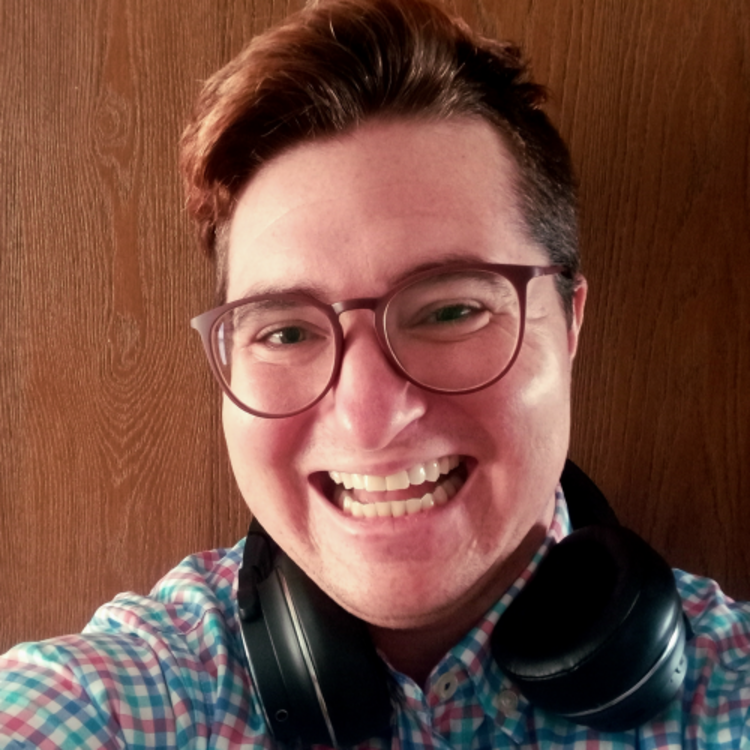
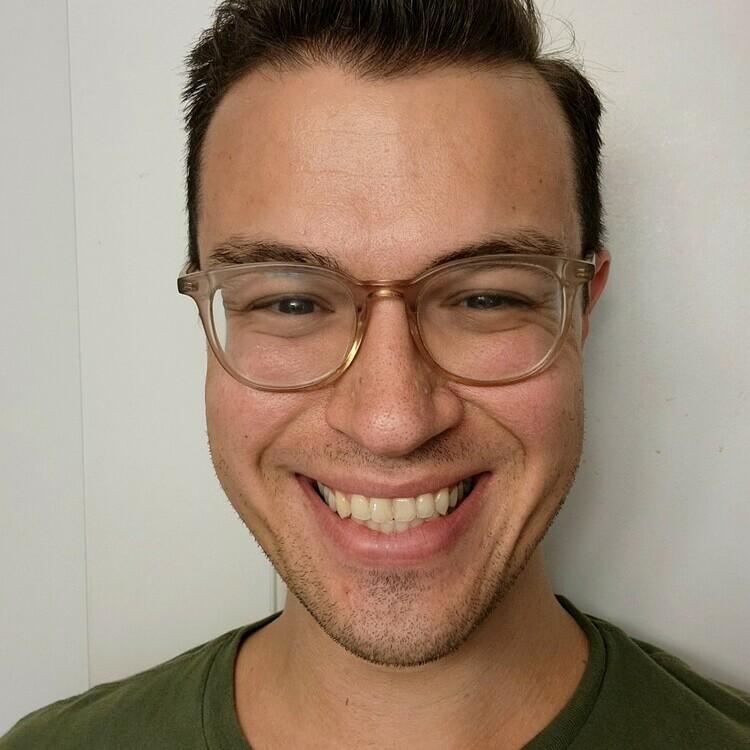
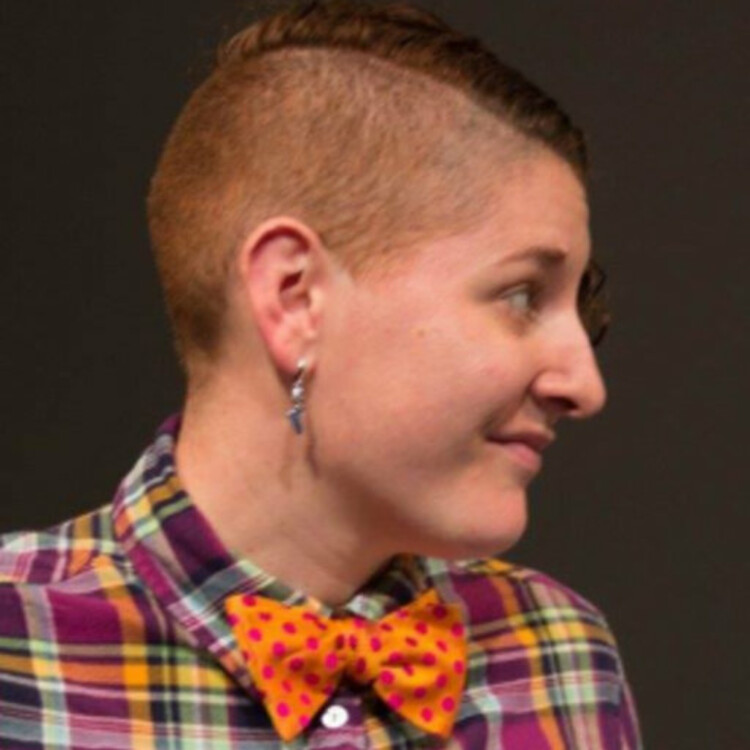
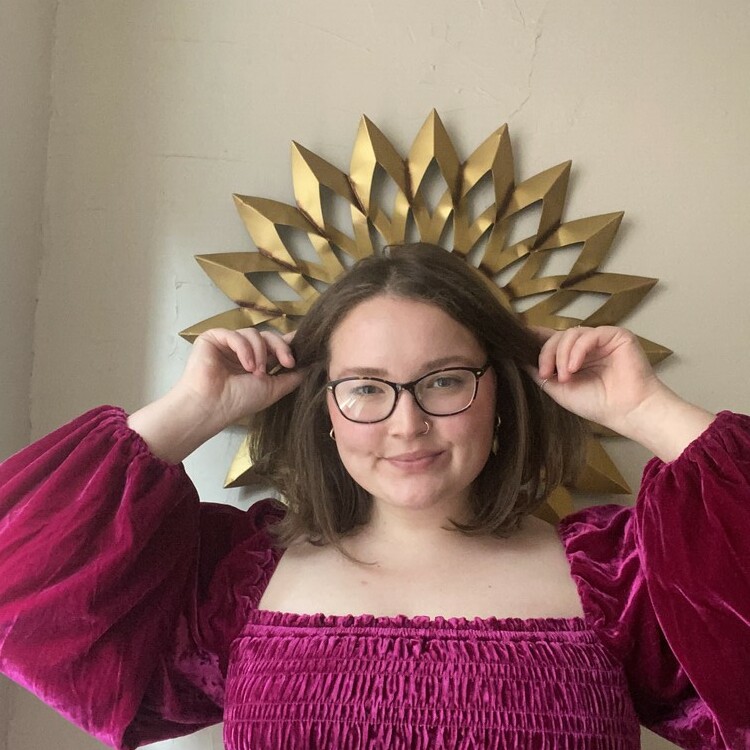
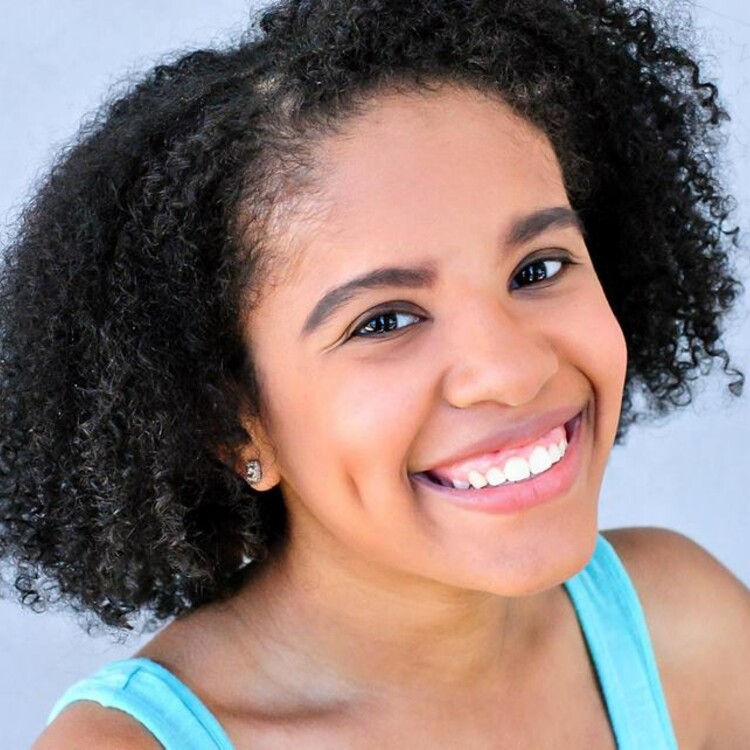
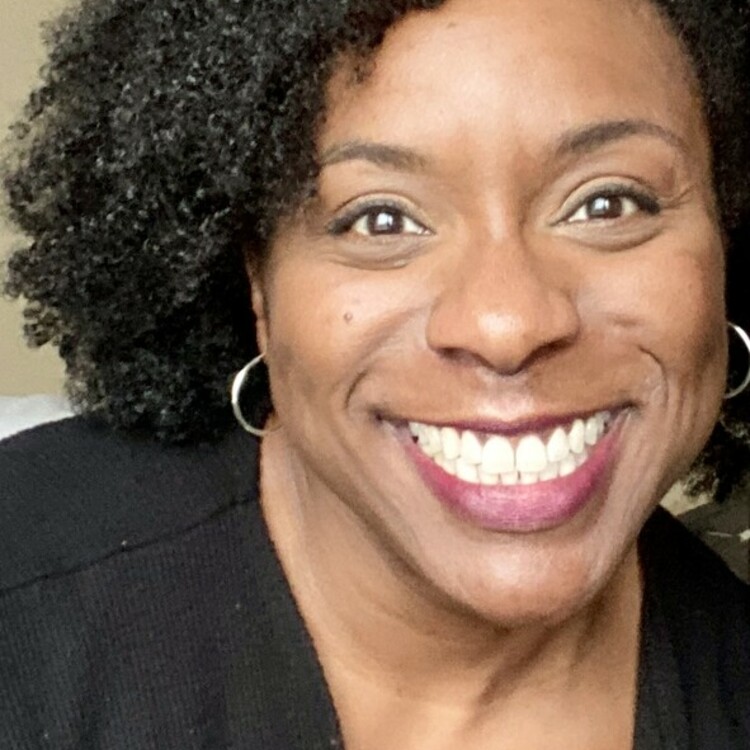
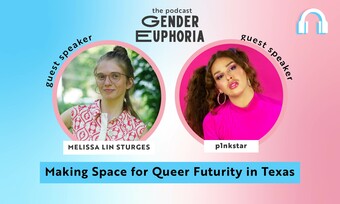



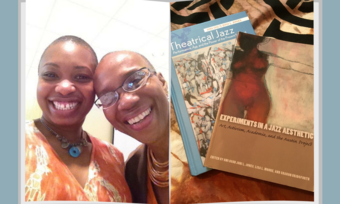


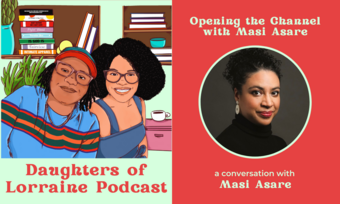



Comments
The article is just the start of the conversation—we want to know what you think about this subject, too! HowlRound is a space for knowledge-sharing, and we welcome spirited, thoughtful, and on-topic dialogue. Find our full comments policy here